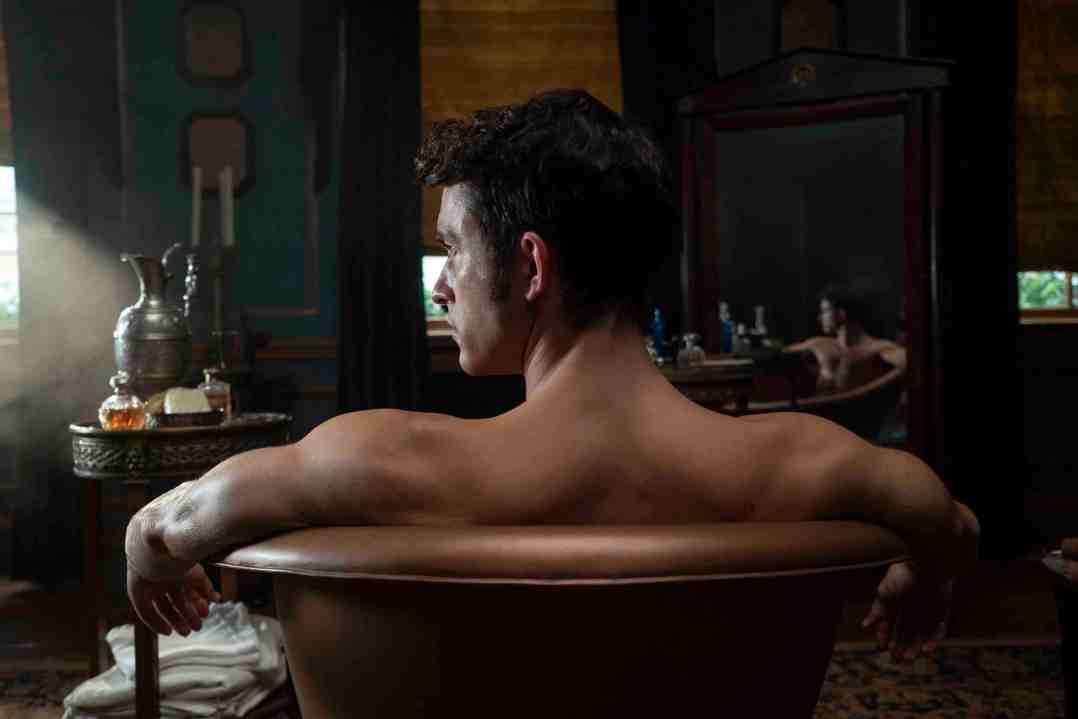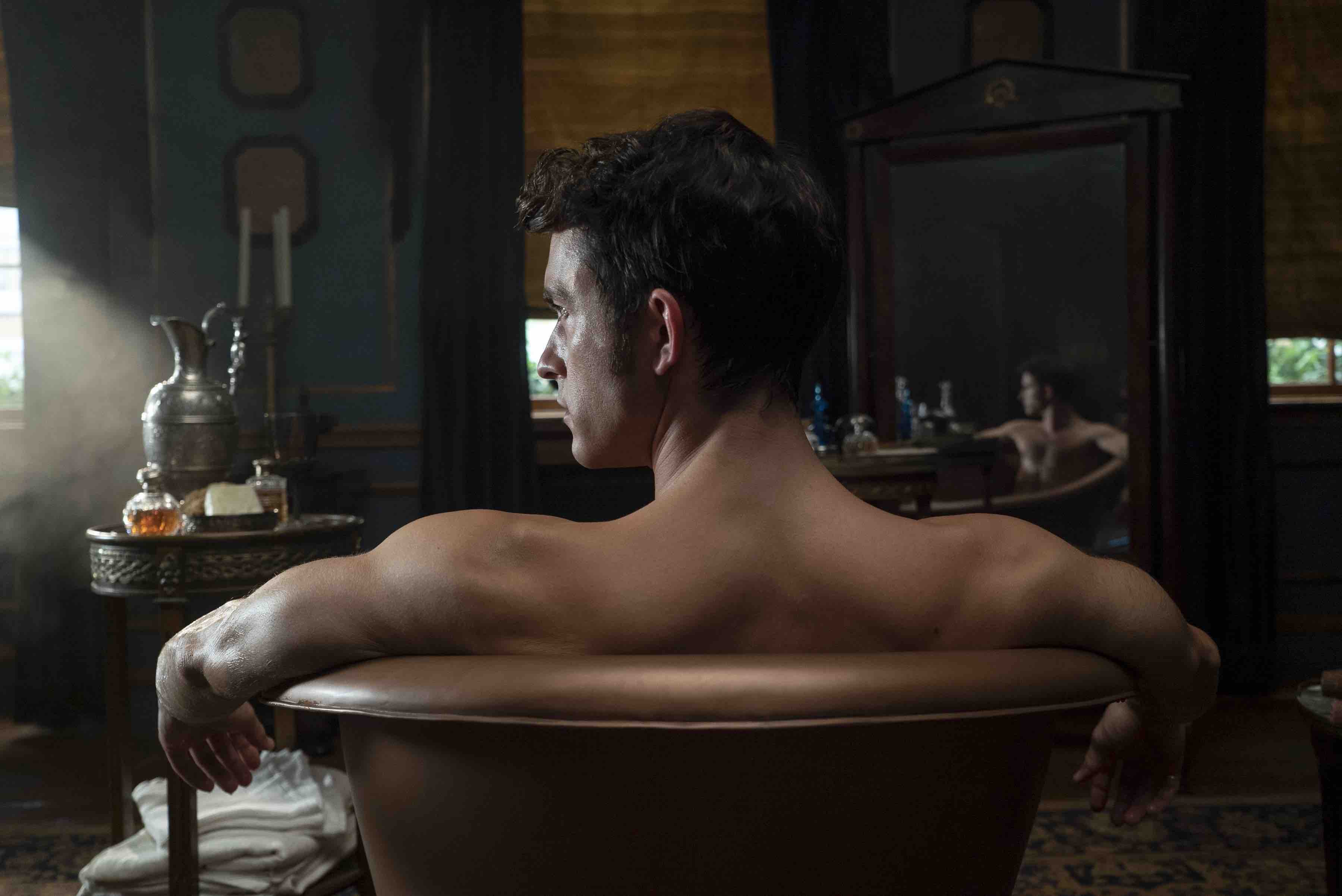What a year it’s been for sex on TV. As we emerge blinking from the annual glut of televisual entertainment, I can’t get over how far we’ve come. Bridgerton, Babylon Berlin, Lady Chatterley… everybody’s at it, with no period in history so tragic that a few cheap thrills can’t be extracted from it. If you’d have told the teenage me that in my lifetime I’d see a comedian with breasts playing a piano with a penis on television, I’d have very much approved; having seen Jordan Gray do so on Channel 4’s Friday Night Live last year, I wish I hadn’t.
Sex on TV has been such a long, strange ride. There were always ‘blue movies’ for those who didn’t mind taking a walk on the seedy side, but most channels were well aware than TV was akin to a guest in the home – and no one wanted to be accused of being the dirty beast who didn’t flush, polluting the pristine hearth. With the sexual revolution of the 1960s, newspapers would often warn of ‘full frontal’ nudity approaching – but there would always be a carefully-placed vase or poncho.
Frank Finlay in 1971’s Casanova and Prunella Gee in 1973’s Shabby Tiger were the Adam and Eve of primetime full-frontal and from then on, the small screen was Liberty Hall. Even mums became sophisticates: ‘We were watching Rock Follies, not nudity but it was “out there”, and I remember my mother remarking on a Julie Covington bed scene “Why doesn’t she just take it all off?”’, says a friend.
By the time we got to the 1980s, we were up to our ears in breasts; we’d seen serious ones (Play for Today), posh ones (The Camomile Lawn) and even vampire ones (Hammer House of Horror – fangs for the mammaries). This was the beginning of the flasher’s friend Channel 4 – or ‘Channel SWORE’ as a tabloid childishly called them – and sometimes a little red triangle appeared on a top corner of the screen to denote risqué content, leading teenage boys to stay up watching some art film until dawn only to discover two donkeys cracking on. But never mind – soon the internet came along and people, even children barely old enough to lace their tiny shoes, could see whatever sort of sex they wanted, whenever they wanted. We’d got what we’d wished for, us dirty-minded 20th century teenagers, and we hadn’t been careful.
By the time we got to the 1980s, we were up to our ears in breasts; we’d seen serious ones (Play for Today), posh ones (The Camomile Lawn) and even vampire ones (Hammer House of Horror)
Now you can’t get away from well-bred thespians shedding their clothes all over primetime TV. But there’s something so solemn and po-faced about it that I long for the often painful double entendres of self-consciously saucy sitcoms. The rise of the ‘intimacy co-ordinator’ may be a clue as to why; paradoxically, the kind of woke fools those who believe in ‘intimacy co-ordinators’ are the kind of people who believe that sex work is ordinary work – but how does that add up with the violence and pain so many sex workers experience? There’s no kind person standing by co-ordinating what’s being done to them – but maybe as they’re working-class and mere ‘civilians’ (Elizabeth Hurley’s weird word for non-actors) their rights to bodily integrity don’t matter as much.
Game of Thrones was a milestone in the shady story of sex on TV. Set conveniently both in the past and in fantasy, it succeeded in making millennials feel morally superior (‘They were beasts in the Olden Dayes!’) while reducing rape to a recreational spectator sport perfectly accompanied by a craft beer from an ethical micro-brewery. The fact that GoT featured six ‘adult’ actresses muddied the moral waters even further. Sometimes it’s hard to tell which performers are in the skin trade and which ones aren’t; when Halle Berry demanded an extra £300,000 for flashing her breasts for five seconds in a film (on top of her £1.7 million pay packet) she was clearly monetising her sex appeal – and her secondary sex organs – just as glamour models do. In fact, couldn’t an OnlyFans model claim that she was less of a sex worker than a respected actress who gets it on on camera?
Are we happier now we can see as much sex on TV as we want? The rise of murderously involuntary celibate young men would suggest otherwise, as would youngsters hanging on to their virginity far longer than my mucky lot did, and the rise of impotence among men in their twenties suffering from sexual sensory overload brought on by gawping at onscreen porn.
And for that finishing touch, here comes the re-evaluation of that pantomime villain of the sex on TV debate, Mrs Mary Whitehouse, courtesy of the brilliant young feminist writer Louise Perry. She reminds us of the contemptuous attitude to this uppity woman who was such an enemy of sex on TV that a porn star mockingly changed her name to ‘Mary Whitehouse’ by deed poll (this fake Mary Whitehouse committed suicide while young, unlike the original, who lived to a happy old age), while Sir Hugh Greene, director-general of the BBC between 1960 and 1969, purchased a grotesque naked portrait of Mrs Whitehouse to hang in his office. Knowing what we now know about ‘Auntie’ and her nasty habit of protecting sexual predators from Savile to Westwood (how interesting that, like many a modern sex criminal, Auntie identifies as female) Mrs Whitehouse now seems a far better moral bet than Greene.
A trans comic with breasts playing a piano with a penis shows a society not at ease with sex, as we were promised – but one in which sex has become a grotesque sideshow, rendering viewers into punters, leaving us all the poorer.







Comments